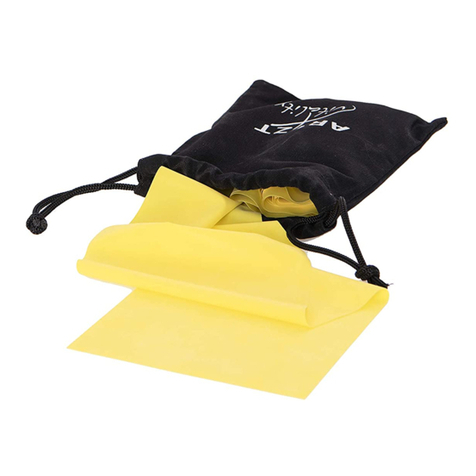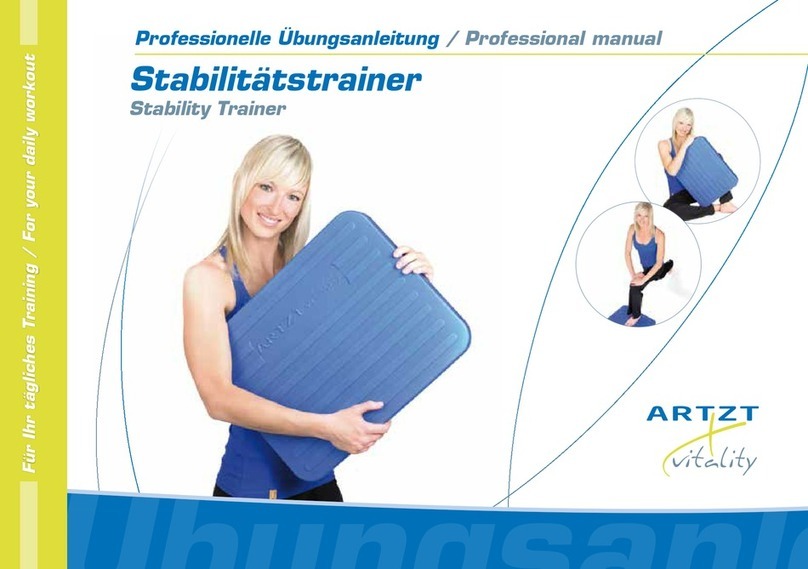
Ergänzend zu therapeutischen Anwendungen finden
die Fitness-Bälle zunehmend Einsatz im Sport und bei
Fitnesskursen wie „Fit-Ball-Aerobic“ oder „Core Stabi-
lisation“. Als Trainings- und Sitzhilfe fordert und för-
dert der Ball den gesamten Bewegungsapparat und
darüber hinaus die Sensorik. Die labile Sitzunterlage
schult konditionelle und koordinative Fähigkeiten, för-
dert vielseitige Gleichgewichtsreaktionen und steigert
somit die Sicherheit im Alltag.
In der Therapie werden ARTZT vitality® Fitness-Bälle
in allen Bereichen der Orthopädie und neurologischen
Rehabilitation für das Training von Beweglichkeit,
Kraft und Koordination eingesetzt. Sie finden Einsatz
bei Parkinson, zentralen Lähmungen, Schlaganfall,
Schädel-Hirn-Verletzungen sowie bei Karpal-Tunnel-
Syndromen, Verletzungen der Rotatorenmanschette
und Tennisellbogen. Sie eignen sich für Personen aller
Altersgruppen – von der Fuß- bis zur Alterspflege so-
wie bei Aerobic und Sport. Kurz: Die großen Bälle sind
als Trainingsgerät weitaus vielseitiger einsatzfähig, als
es auf den ersten Blick erscheint.
4
Seit einem halben Jahrhundert sitzen, üben und ent-
spannen Personen aller Alterklassen auf den großen
runden und farbenfrohen Bällen. Zunächst nur in der
Medizin eingesetzt, fand der große Ball über den Einsatz
bei Präventionsprogrammen von Krankenkassen Einzug
in nahezu jeden Privathaushalt und genießt noch heute
große Beliebtheit bei Sport und Bewegung, Therapie und
Gesundheit, Freizeit und Spiel. Kaum ein Bewegungsge-
rät ist so vielseitig einsetzbar: Der Ball fördert Gleich-
gewicht und Koordination, Körperwahrnehmung und
-haltung, Entspannung, Flexibilität und Kraft.
Ergänzend zu seiner herausragenden Flexibilität über-
zeugt der Ball Jung und Alt durch seinen unglaublich
hohen Aufforderungscharakter - er macht jeden Einsatz
zu einem „runden“ Erlebnis. Probieren Sie es aus!
Einleitung Einsatzgebiete































